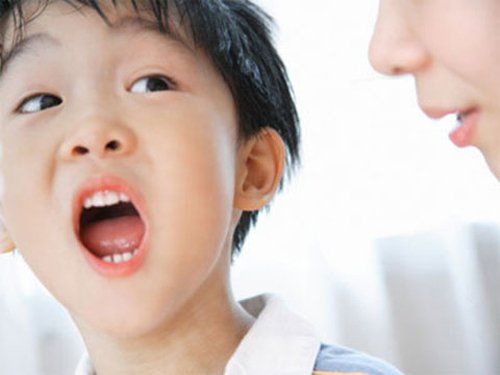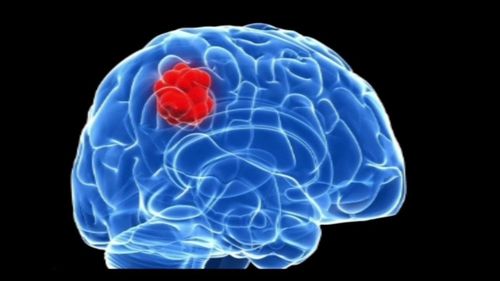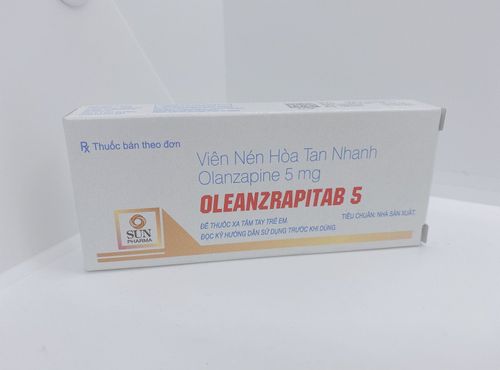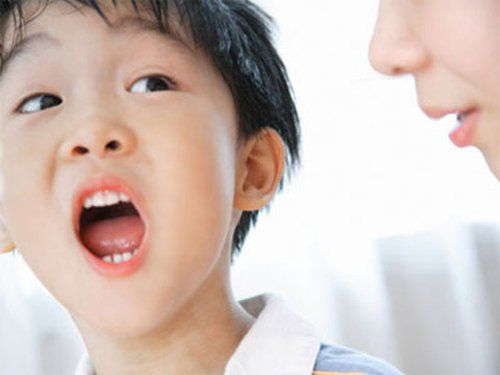This is an automatically translated article.
Language pathologies such as slurred speech, stuttering and aphasia greatly affect the patient's daily life, study, work and psychology. Therefore, language rehabilitation plays an important role in giving patients a better life.1. Overview of language pathologies
1.1 Common speech pathologies Lisp is a condition in which when speaking, the sounds of speech are not clear, making it difficult for listeners to understand. Lisp is common in children, especially preschool and primary school children. As children get older, this pronunciation error will be gradually corrected. Children may have stuttering of initial consonants, end consonants, vowels, or tones. Children can speak many words, speak quickly but speak unclearly
The cause of slurred speech may be the local language; habit; malformation of the vocal organs, cleft lip and palate; poor mouth movement in children with cerebral palsy, people with nerve damage; hearing loss or middle ear disease (otitis media, mastoid otitis),...
Lisp is divided into 2 types:
Functional lisp: Pronunciation error caused by the process of learning, language development of the child. children, not due to physical damage to the brain or speech organs. This error is encountered in children just starting to learn to speak, then it will be adjusted gradually, until a certain stage of development, the child will pronounce correctly. However, some children still keep the habit of mispronunciation. Functional slurred speech is curable with continued practice; Slurred speech caused by pathology in the vocal organs: Due to cleft palate (can be treated by surgery) or other diseases such as vocal cord paralysis, tongue motor paralysis, vocal cord cysts, vocal cord inflammation, granulomatous nodules vocal cords, laryngeal edema,...
Stuttering Is a disorder of speech rhythm, speech is not fluent. In people with stuttering, when speaking, there are words or syllables in the sentence that are repeated in succession. There are types of stuttering such as: Fitting a syllable of a syllable, fitting a syllable, fitting a part of a sentence, interjecting a syllable or an irregular sentence that is repeated over and over again,...
Causes of stuttering Usually due to habits from the time of learning to speak but not being corrected, psychological guilt leads to stuttering to cover up thinking difficulties or having some diseases of the pronunciation organs.
Aphasia Aphasia is a condition in which a patient loses the ability to understand speech, express speech, and display language signals (reading, writing, ...) due to brain damage. There are about 70-80% of patients with aphasia due to cerebrovascular accident.
In addition, there are other causes of the disease such as brain tumor, traumatic brain injury, after surgery to remove brain tumor. Aphasia mainly occurs in adults - the age group can hear, speak, read and write normally.

U não là một trong các nguyên nhân khác gây tình trạng thất ngôn
About classification:
Clinically, aphasia is divided into 2 groups: fluent aphasia (patient can speak easily) and non-fluent aphasia (patient has difficulty in forming sounds); According to the location of the lesion, there are types of aphasia such as Broca's aphasia (Broca's area is damaged), Wernicke's aphasia (damage to the middle cerebral artery or its branches), conductive aphasia (damage to the conduction tract). neurotransmission of the connection between motor and sensory language areas), total aphasia (damage in both Wernicke's area and Broca's area), aphasia aphasia. 1.2 Consequences of language disease Most people who suffer from slurred speech, stuttering, aphasia, etc. face a number of obstacles such as:
Communication: Difficulty expressing their own needs, making them difficult to express themselves. the opposite person is difficult to understand, slows down communication, avoids communication in crowded places, leading to a decrease in vocabulary; Psychology: Children with communication problems will be prone to stress, anxiety, and reduced relationships with friends. Adults with limited communication skills are prone to depression, anger,...; Learning: Children with speech disabilities may not dare to go to school, rarely achieve excellent results because of lack of initiative in learning; Social relations: Children with limited communication often tend to limit making friends, do not have harmonious family relationships. Adults with communication problems also have difficulty in social relations, are less proactive in communicating with strangers, find it difficult to find a life partner, etc.
2. Measures for language rehabilitation
The goal of these methods is to treat the physical lesions that cause speech pathology; help the patient have language as close to normal as possible; while promoting all forms of communication so that the patient can communicate best.
2.1 Rehabilitation of speech and language slur Signs of a child with lisp Difficulty in moving lips, mouth, tongue, lower jaw,...; There are pronunciation errors; Speak slowly, speak difficult, unclear; Short or irregular breathing.

Trẻ nhỏ gặp khó khăn trong việc phát âm chính xác
2.2 Rehabilitation of stuttering function Signs of a child stuttering Slightly panting, pauses; When speaking often spasms of the muscles of the face, neck and torso; Stuttering can be interrupted, resting at any position of the sentence or taking a breather in the middle. Intervention and rehabilitation measures for stuttering children Relax exercise: Guide children to relax, breathe deeply for 3-5 times, every day should practice sitting with eyes closed and relax for 10-15 minutes in 2 times. At the same time, children should be encouraged to speak slowly. The person communicating with the child should speak slowly, wait for the child to speak, do not urge; Correct the rhythm of speech: Let children speak short sentences of 2-3 words slowly, when finished speaking, they should take a break to prepare the next sentence. Some time later, when the child has stopped stuttering, guide them to say sentences longer than 4-5 words. If the child only stutters when communicating with a person, guide the child to speak slowly, can actively talk by looking at the person's photo before speaking directly. When rehabilitating children with stuttering, it is necessary to discuss more about psychological problems, intervene in education to reduce stress, and regularly encourage children to be more confident in communication. At the same time, children should be encouraged to participate in group activities to increase their confidence and have more communication opportunities.
2.3 Rehabilitation for people with aphasia Signs that the patient has difficulty understanding speech Poor understanding of words and sentences when listening to other people talk; Failure to carry out the orders of others; Unable to point out objects, colors, body parts, etc. when asked; Do not read or follow instructions written on the paper.

Người bệnh gặp khó khăn về việc hiểu lời nói từ mọi người xung quanh
Signs that the patient has difficulty expressing words The patient is unable to answer questions even though they understand; The patient could not say the name of the object, animal, color,... when asked; Patients with poor writing ability even though they previously knew how to write normally. Interventions and rehabilitation If the patient understands well but cannot speak many words: Use pictures, drawings, and everyday objects to teach. Then bring each object out to ask, asking them to repeat it with words and signs; If the patient can speak single words: Teach the patient to combine single words into short sentences, gradually increasing the length of the sentences; use pictures for patients to follow the pictures and encourage them to retell short stories; If the patient understands poorly: Use signs and gestures combined with words to name objects. Then, place the object in front of the patient, ask the patient to point to the object when it is named, if they are wrong, then guide and describe it again until they point it right. When the patient has understood a lot, teach the patient to say single words, then short and long sentences.
With the rehabilitation of aphasia, depending on the extent and location of brain damage, the pathology can be severe or mild. For people with mild aphasia, the average recovery time is 6-12 months. For people with severe illness, the recovery time may be longer.
When restoring speech function for people with lisp, stuttering, aphasia, it is necessary to pay attention not to put pressure on the patient, practice from easy to difficult, always encourage and encourage the patient,... That way, the patient will speak more fluently and confidently in daily communication.
Please dial HOTLINE for more information or register for an appointment HERE. Download MyVinmec app to make appointments faster and to manage your bookings easily.













